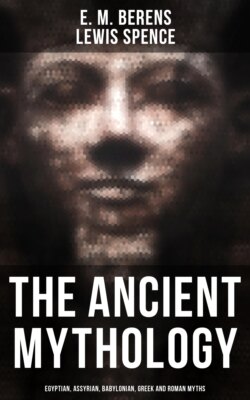Читать книгу The Ancient Mythology: Egyptian, Assyrian, Babylonian, Greek and Roman Myths - Lewis Spence - Страница 128
На сайте Литреса книга снята с продажи.
CHAPTER IX:
THE PRIESTHOOD, CULT, AND TEMPLES
ОглавлениеTable of Contents
At an early period in Babylonian history the priesthood and kingship were blended in one office, and it is not until after several centuries from the beginnings of Babylonian history as we know it that the two offices were separated. Indeed, long afterward the monarchs of Babylonia and Assyria appear to have taken especial pleasure in styling themselves the priests of such and such a deity, and in all likelihood they personally officiated at the altars of the gods on occasions of high religious sanctity. The priesthood in general was called shangu, which may mean 'sacrificer,' and there is little doubt that at first, as among other peoples, the Babylonian priest was practically a medicine-man. It was his business to secure people from the attacks of the evil demons who caused disease and the wiles of witches, and to forecast the future and discover the will and intentions of the gods. It is quite clear how such an official as this came to be known as the 'sacrificer,' for it would seem that the best way to find favour with the gods was to make offerings to them through an accredited intermediary. Indeed the early priesthood of Babylonia appears to have been as much magical as religious, and we read of the makhkhu, or soothsayer, the mushelu, or necromancer, the asipu, or sorcerer, and the mashmashu, or charmer, whose especial functions are probably outlined in their several titles.
But as civilization proceeded and theological opinion took shape, religious ceremonial began to take the place of what was little better than sorcery. It has been said that magic is an attempt to force the hands of the gods, to overawe them, whereas religion is an appeal to their protective instincts. Now when the feeling began to obtain that there was such a quality as justice in the universe, and when the idea of just gods had an acceptance among the people through the instruction of thinking theologians, the more vulgar practices of the sorcerer-priests fell out of favour with the upper classes, if not with the populace, and a more imposing ceremonial took the place of mere incantation. Besides, being founded on the idea of mercy as opposed to mere power, religion has invariably recommended itself, politically speaking, to the class of mind which makes for immediate and practical progress as apart from that which seeks to encourage mere speculation. As the ritual grew the necessity for new branches of the priesthood was discovered. At the head of the priestly organization was the shangan-makhu, and each class of priests had its chief as well. The priests were a caste,—that is, it is probable that the right to enter the priesthood was vested in certain families, but many young men were educated by the priests who did not in after life exercise their functions, but who became scribes or lawyers.
As in the case of most primitive religions, the day of the priest was carefully subdivided. It was made up of three watches, and the night was divided into a similar number of watches. Three relays of priests thus officiated through the day and three through the night.
Priestesses were also known in Babylonia, and many references are made in the texts to the 'sacred women.' Some of these were exorcisers, and others, like the Greek pythonesses, presided at oracular shrines. The cult of Ishtar in especial had many attendant priestesses, and these were of several classes.
